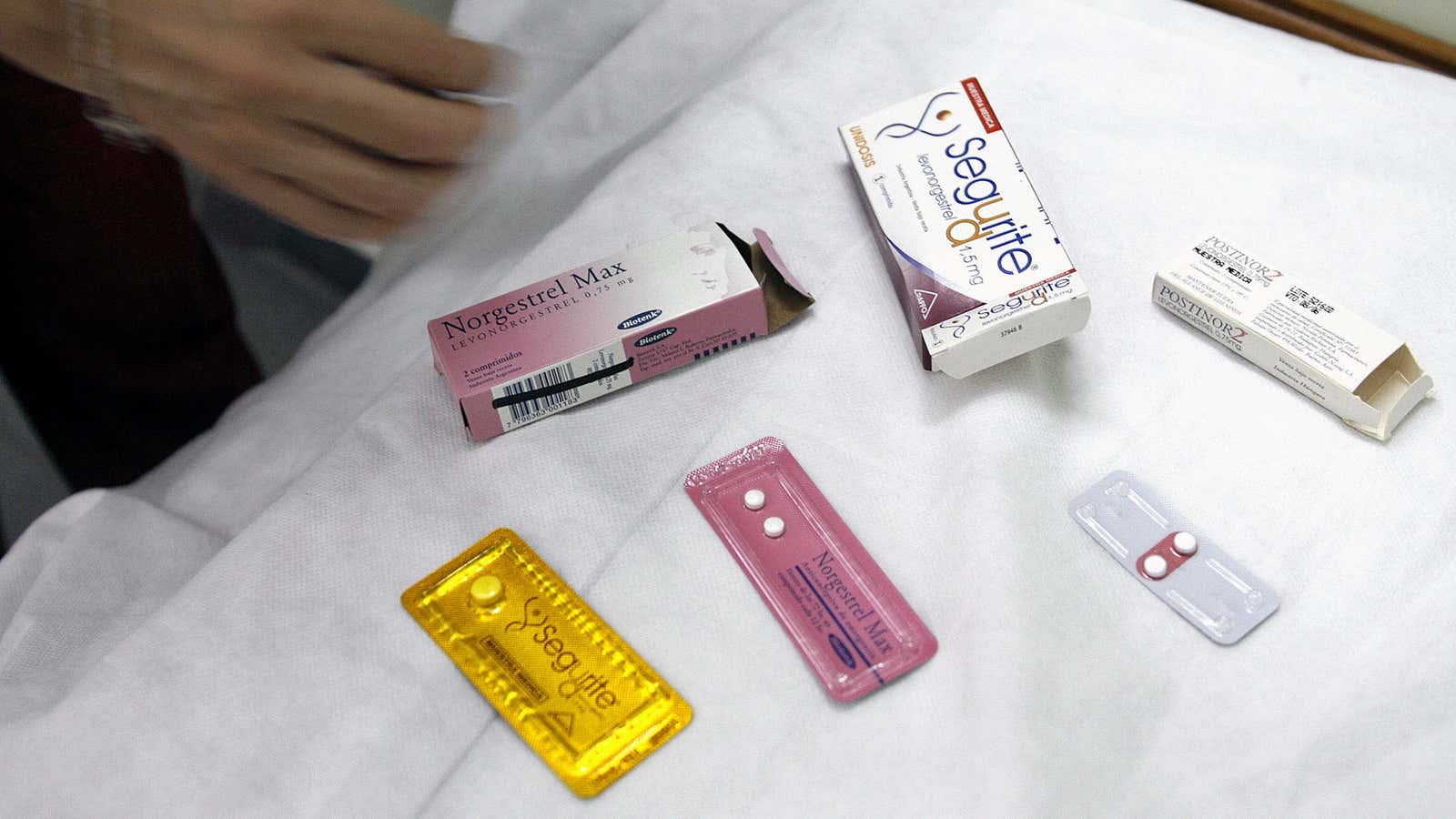Poor-quality medication—that is, counterfeit drugs, or ones not made to the right specifications—are a huge problem. But it has traditionally been hard to measure how pervasive the problem is. “You’d have to sample drugs across the whole country, in every country,” Facundo Fernandez, professor of chemistry at Georgia Tech, told Quartz. Fernandez has been working for a decade to develop tools for faster and easier drug screening.
In his previous research, Fernandez has focused on antimalarial drugs in countries in Africa and Southeast Asia. “In some countries we surveyed,” he says, “You’d go in and look at 7,000 samples, and find no fakes at all. And in other countries, I’d say there’s usually something like 5% to 10% substandard medication.”
But his latest study took him to Lima, Peru to investigate emergency contraception. Global health and development organization FHI 360 contacted Fernandez with concerns about the quality of Peru’s supply of emergency contraceptives, which release a high dose of hormones to prevent the fertilization and implantation of an egg after unprotected sex. “They said, ‘Look, we’re seeing some strange things here,'” Fernandez says, “And sure enough, many were poor quality.”
In fact, 28% of the batches sampled didn’t contain the hormones they were supposed to. In some cases, piracy was suspected: One batch of drugs, for instance, contained a common antibiotic instead of any hormones at all. “It’s possible that this came from a genuine factory, and that their supply of the active ingredient was bad,” Fernandez says, “But in all likelihood it was a fake.” Counterfeit medication, he says, mimics the style and packaging of the real thing. But other substandard products were real medication that had degraded—they had been stored improperly or for too long, and were no longer effective. In any case, he says, over a quarter of the drugs sampled “probably just wouldn’t work.”
But the problem goes beyond Lima: In the age of the internet, substandard medication is a threat everywhere. A recent survey by the US Food and Drug Administration found that one in four internet consumers had ordered drugs from an online pharmacy. But only 3% of such websites are legitimate. In 2013, the FDA shut down more than 9,600 illegal websites, seizing over $40 million dollars worth of medication. Some of these sites had misleading urls like “www.walgreens-store.com”.
“The most common source of bad medicine in developed countries is the internet,” Fernandez says. “Ideally, a country would take care of policing the drugs people sold there. But not everything can be checked.” For consumers, he says, common sense is key: “If something seems too cheap to be real,” he says, “it almost certainly isn’t good for you.”
As a chemist, Fernandez is focused on finding new ways of screening out bad drugs. “We’re learning how to do this more quickly,” he said. “But in an ideal world, a cellphone will do this for you.” One day, he hopes, consumers will be able to scan their own medications to check for the proper active ingredients. “Unfortunately, we’re just not there yet.”




